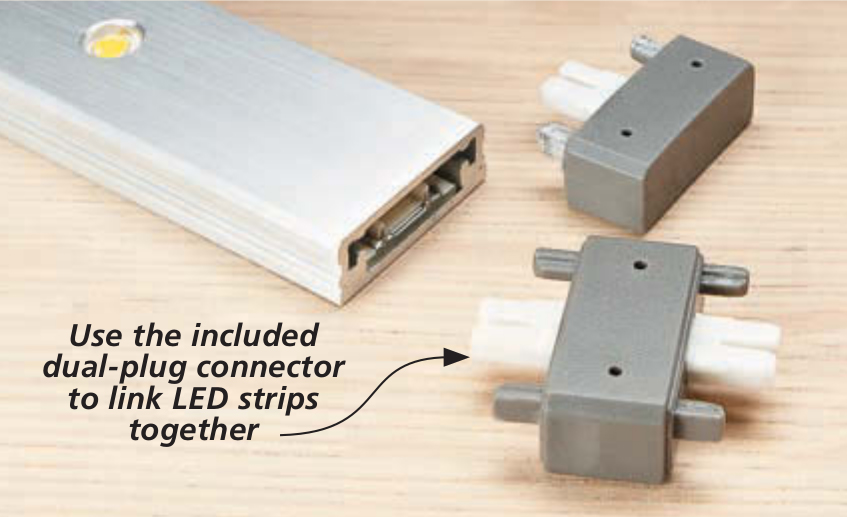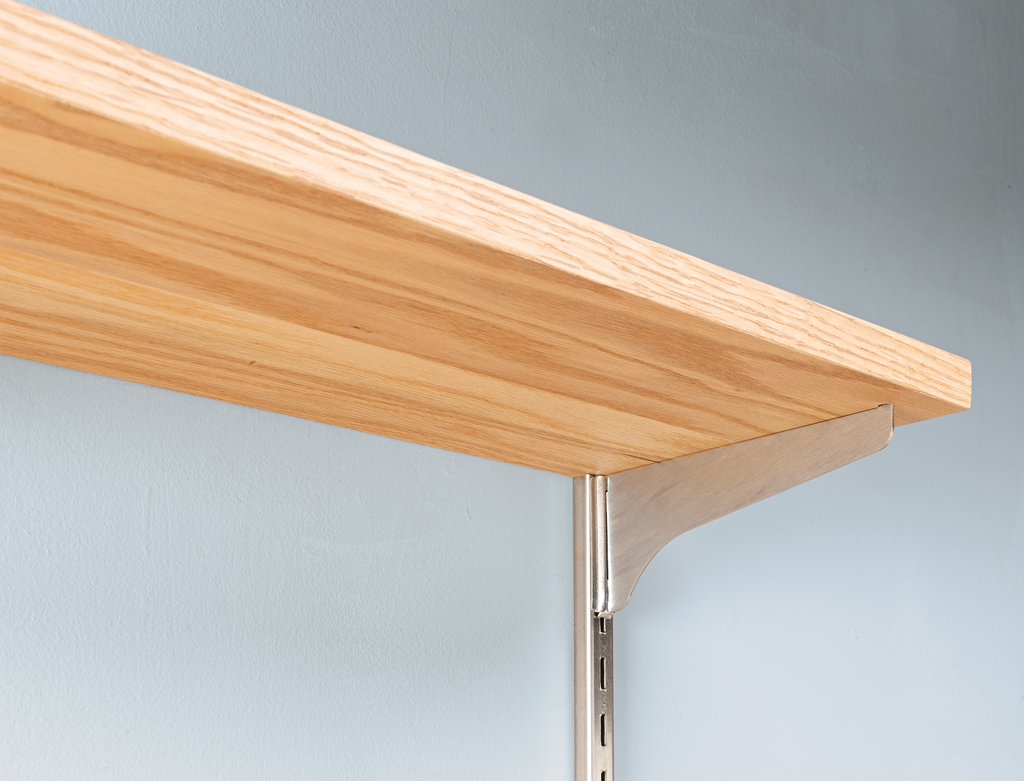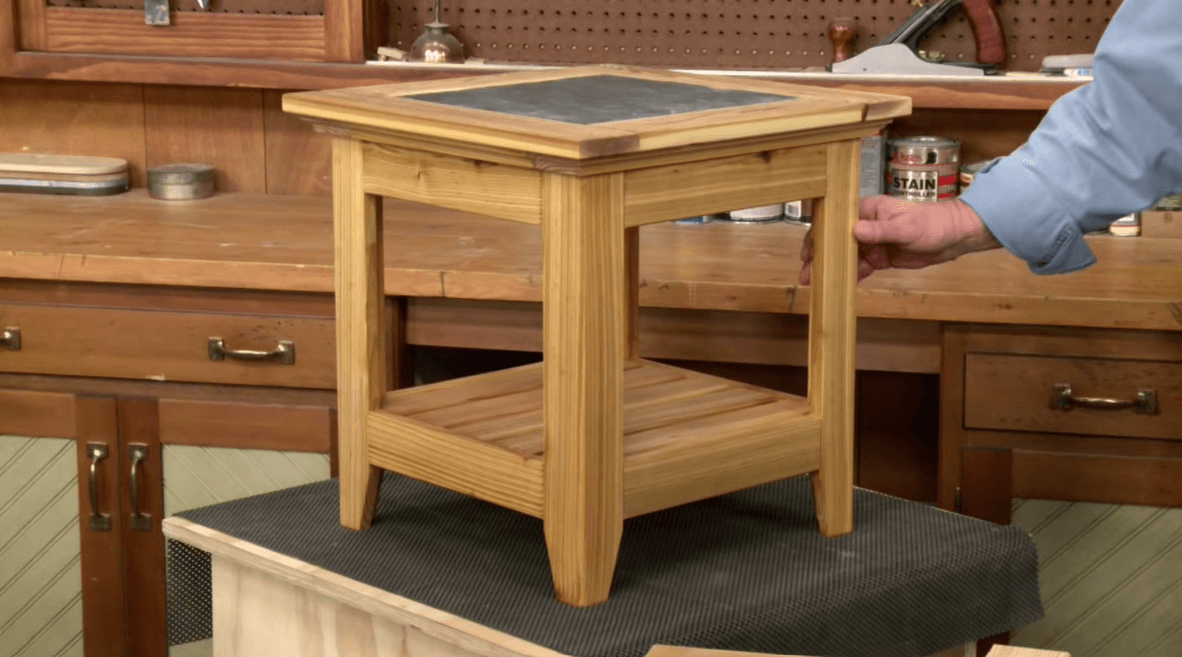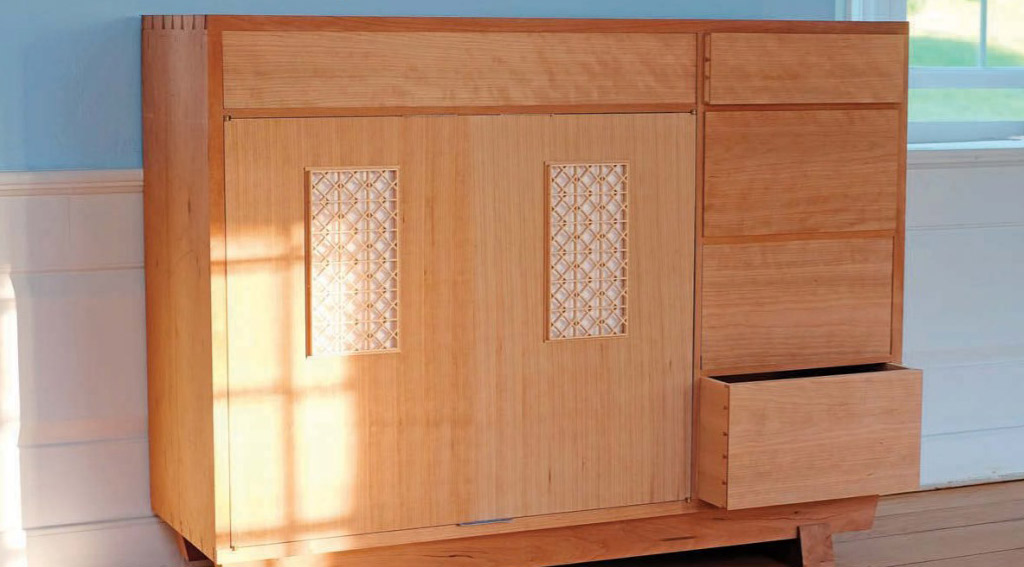
Adding interior lighting to a display cabinet is a great finishing touch. It draws attention to the project and the items on display. The only problem: There are a lot of choices. With so many options, it’s easy to get overwhelmed.
Choosing the best lighting for a cabinet or shelf is easiest if you consider just two aspects: the source and the fixture. By the source I mean incandescent or fluorescent, among others. Knowing how these types of lights work helps narrow down the choice. Then you can decide on the type of fixture. Puck, strips, and canisters are a few of the choices.

LIGHT SOURCE
Only a few years ago there were just two choices for lighting: incandescent and fluorescent. But today there are almost as many light sources as there are fixtures.
INCANDESCENT. An incandescent light is the oldest, most common type of lighting available. Although the warm yellow glow is not quite as bright as other types of lighting, it’s inexpensive. It’s biggest drawback is that it produces a lot of heat. If you want to use it in an enclosed cabinet, it needs ventilation.
FLUORESCENT. Fluorescent light is at the opposite end of the color spectrum from incandescent. It casts a blue-violet glow. Because of how light is produced in the tube, it will take less wattage to produce the same amount of brightness as an incandescent bulb. That makes it more efficient to operate. The violet color of the light has a tendency to distort the color of objects, but you can find warm fluorescent light bulbs that are more natural looking and don’t cast violet light.
Another design using the same technology is a compact fluorescent bulb. Most bulbs are made to fit in an incandescent light fixture, replacing incandescent bulbs to help reduce heat build up.
LIGHT EMITTING DIODES. If you want high-intensity light, then lightemitting diodes (LED) are the best choice. They’re really tiny lights clustered together to make one bright light. These lights are lower in energy consumption and last longer than incandescent lighting. There are disadvantages to this light, though. They’re expensive (about $20 per bulb) and their blue tint doesn’t give the best color rendition. HALOGEN LIGHTING. Another high intensity option for lighting is halogen lights. Some of these lights are designed to fit incandescent fixtures, so you can get whiter light. They’re more efficient to use and last longer than ordinary incandescent bulbs. They do burn hotter, so they need ventilation too.
XENON. Xenon lights may be the best choice of all. They burn cooler and still give off bright white light that mimic natural daylight. Often this is the best option when true color is important. The downside to xenon lights is that they’re expensive (about $20 for a bulb).
FIXTURES
There are a wide variety of cabinet fixtures, but the size and shape of the fixture and where it needs to be located for optimal lighting may dictate which is best for a particular project.

CANISTER LIGHTS. An early popular shape of light was the canister light (lower left photo). Canister lights, which house incandescent, compact fluorescent, or halogen bulbs, shine light directly down. Some fixtures have the option to move side-to-side to a limited extent.
The downside to canister lights is that they have to be vented, so you can only use them in a cabinet that’s designed to house the bulky canisters.

PUCK LIGHTING. A good alternative to canister lighting is puck lighting (lower right photo). Puck lights take up the least amount of space in a cabinet because they don’t require venting. You can surface-mount them or recess them slightly. Still other puck lights are battery-powered and don’t require special installation of any kind.
 STRIP LIGHTING.
To light multiple shelves with one light you can mount a strip light in the upper inside edge of a cabinet (photo above). This type of fixture comes with LED, fluorescent, or incandescent bulbs.
STRIP LIGHTING.
To light multiple shelves with one light you can mount a strip light in the upper inside edge of a cabinet (photo above). This type of fixture comes with LED, fluorescent, or incandescent bulbs.

LINKABLE STRIP LIGHTS. One handy feature of strip lighting to look for is linkable strips. They have either short, pigtail connections or direct connectors, like the ones shown in the inset photo at the top of the page. You can connect multiple lights together to suit your needs for any project.
POWER SUPPLY. Regardless of what type of fixture you decide on, keep in mind that several of the fixtures here require voltage regulators or transformers to supply the correct amount of power. You’ll need to consider this when planning for and installing lighting in a project.
Categorizing light sources and fixtures can help you narrow down the options. Then making the right choice will be easy.












